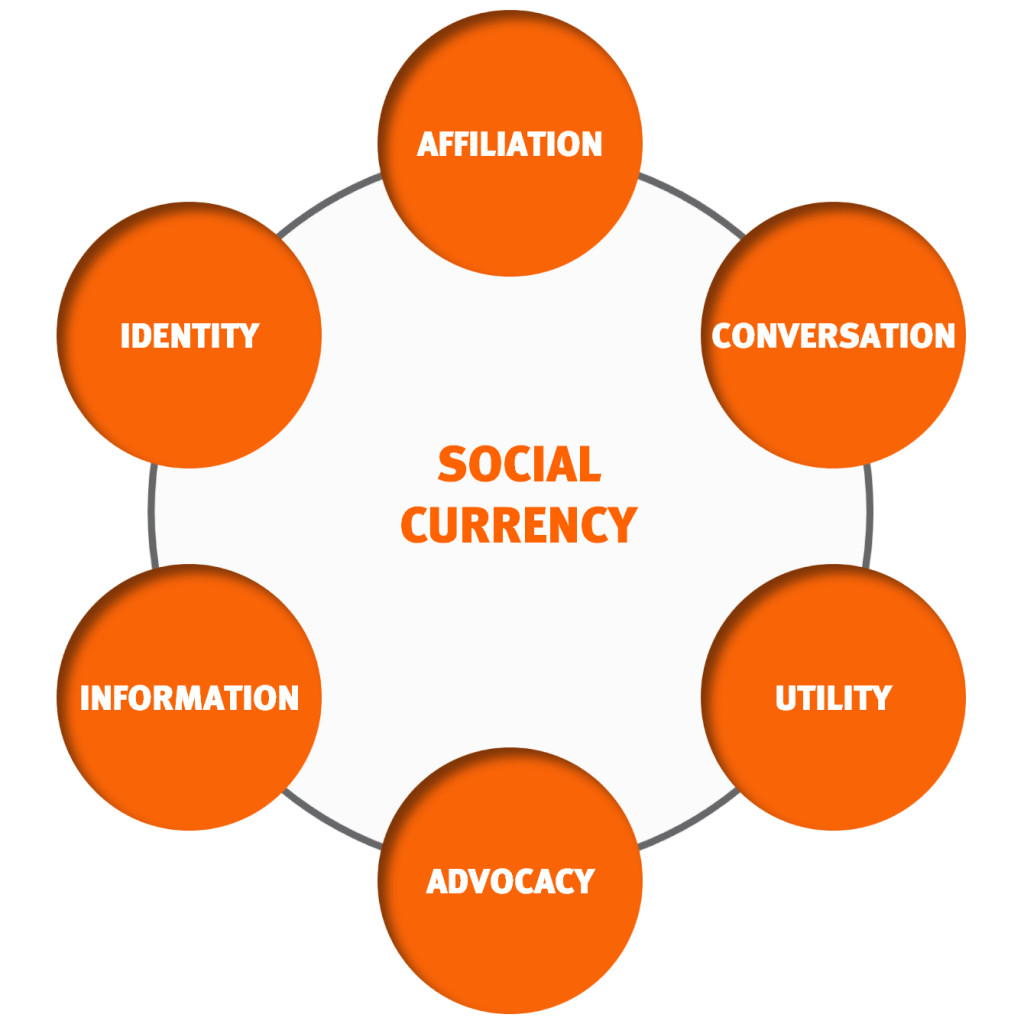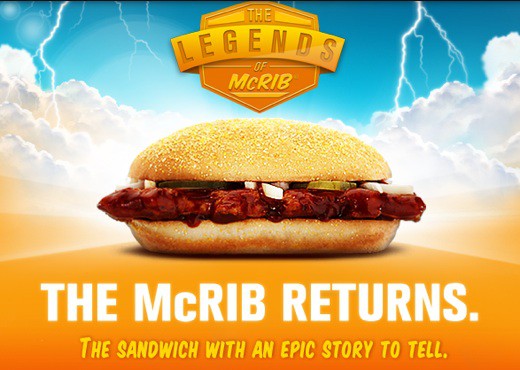Courtesy of We Are Animal
Why do some online stories spread while others eat the proverbial digital dust?
That is the number one question befuddling digital and social media marketers around the world. In a world that is swimming around in content clutter, your old “spray and pray” methods of advertising and promotions are dead.
You’d probably know too that dull, insipid, and “me-too” sell, Sell, SELL messages no longer work. After all, your average consumer is so exposed to advertising messages that he or she is probably inured to most marketing messages.
The only way to achieve an impact is to use OPM – not Other People’s Money but Other People’s Media. You need to develop products, services and content that are so outstanding that your audiences are willing and happy to help you spread your “ideavirus” (ala Seth Godin) through their own social networks.
This is where Social Currency comes in.
Defining Social Currency
According to the consulting company Vivaldi Partners, social currency can be defined as follows:
“Social currency is the extent to which people share the brand or information about the brand as part of their everyday social lives at work or at home” – Vivaldi Partners
There are 6 pillars in social currency, namely Affiliation, Conversation, Utility, Advocacy, Information and Identity. These can be represented by the infographic below:
Courtesy of Wikimedia
Lets go through each of these drivers to understand what they mean:
- Affiliation is the relationships that exists between a brand, its customers and other consumers. Brands that can create a strong sense of community have strong social currency.
- Conversation is the interaction and engagement which a brand has with its customers, members, and fans. Indeed, social currency is all about igniting brand “talkability”.
- Information and knowledge are the stuff that is shared amongst the people in your social networks.
- Utility is the value of the content shared. This should be considered from both the perspective of the giver as well the recipient of the content.
- Identity is the holy grail of social currency. Whatever we share will inadvertently reflect on what our brand is perceived to be like.
- Advocacy is the attachment that a person has to a brand. It influences how he recommends or even defends the brand.
These pillars of social currency form the bedrock of most content marketing efforts on digital channels. However, that isn’t a guarantee that your piece of content would automatically “go viral” if it possesses these.
So what can we do to improve the chances for our content to “go viral”?
3 Ways to Trigger Virality via Social Currency
According to Jonah Berger, author of Contagious – How to Build Word of Mouth in the Digital Age, social currency in the context of virality boils down to a single question: “How does this make people talk about my product or idea?”
Knowing about cool things makes people seem sharp and in the know. This helps to get people talking and sharing.
Quoting from Berger’s book Contagious:
“Just as people use money to buy products or services, they use social currency to achieve desired positive impressions among their families, friends, and colleagues.” – Jonah Berger
There are three main ways to generate social currency: Inner Remarkability, Game Mechanics, and Making People Feel Like Insiders.
#1 Inner Remarkability
Remarkable things are unusual, extraordinary, and worthy of attention. They are the proverbial Purple Cows which Seth Godin wrote about a decade ago. Most are novel, surprising, extreme or just plain interesting.
The key here is to think about how you can make your product, service or content surprising in an unexpected way.
“Will It Blend?” by Blendtec
[youtube id=”DORyTWjqg7U”]One of the most famous examples of remarkable content is Blendtec’s famous (or infamous) series of videos labelled “Will It Blend?”
The story goes that former engineering graduate turned entrepreneur Tom Dickson used his expertise to create his own home blender and founded Blendtec in 1999. Although his product was great, nobody took notice of it until he hired George Wright as his marketing director.
One day, George noticed a pile of sawdust on the floor of the manufacturing plant. It turned out that Tom was trying to “break” his blenders by testing their durability and power. One thing led to another, and before too long, George asked Tom to drop 50 glass marbles into one of his blenders, hit the button for slow churn and recorded the process on video.
When George posted it on YouTube, people were amazed and loved the videos. This led to the videos racking up an amazing 6 million views in their first week.
To date, Blendtec blenders have not only demolished a whole range of objects – from iPhones and Justin Bieber CDs to glow sticks and Wii controllers – they have also received more than 300 million video views. Within two years, the campaign increased their retail blender sales by an astonishing 700 per cent!
#2 Game Mechanics
Have you realised how addicted we are to gaming? And it doesn’t stop at Angry Birds, Minecraft, or DOTA.
According to Amy Jo Kim (see my blog post Engaging Customers through Game Mechanics)…
“Game mechanics are rule based systems that facilitate and encourage a user to explore and learn the properties of their possibility space through the use of feedback mechanisms.” – Amy Jo Kim
Typically, game mechanics involves earning points, gaming rules, feedback loops, levels, leader boards, and rewards. They motivate us both internally and inter-personally, and helps to generate social currency because we all want to look good.
Social Networks and Game Mechanics
Social networks like Facebook, LinkedIn and Instagram all employ elements of game mechanics. We all enjoy that buzz when the number of friends and followers grow each day, or when a piece of content which we shared gets widely “liked”, commented on and reshared.
The “Art of the Trench” by Burberry
Do you know that Burberry is one of the most social savvy fashion brands out there?
Burberry created a website called the “Art of the Trench” which is a montage of Burberry and all their worldwide fans who wear their signature trench coats. People from all over the world can send their photos of themselves wearing the iconic Burberry trench coats. If they are lucky, Burberry will post their photos on its website.
When the photos of Burberry wearers are posted, their ecstatic customers will tell all their friends and family about it. This helped the Burberry site to garner millions of views from more than a hundred different countries.
Courtesy of The Art of the Trench website
#3 Make People Feel Like Insiders
The final strategy cited by Jonah Berger to generate social currency involves getting people to feel like insiders. By doing so, they feel like part of an exclusive “IT” crowd who gets access to rare information, products and privileges.
A key point to note here is the importance of generating scarcity. Scarce things are less available due to high demand, limited production or restrictions in the time and place where you can get them. It is one of the six weapons of influence conceived by renowned psychologist Robert Cialdini.
Exclusivity is the other feature of making people feel like insiders. These are things that are only available to people who meet a certain criteria.
McDonald’s McRib
In 1979, McDonald’s Executive Chef Rene Arend devised a new pork sandwich called the McRib to soothe irate McDonald’s franchisees who couldn’t get hold of their bestselling Chicken McNuggets then. The burger combined the rich smoky flavour of a Southern barbecue with a pork patty, onions, pickles and a bun.
Although McDonald’s test marketing results appeared favourable, sales numbers were lacklustre. McDonald’s tried promotions and features, but they didn’t seem to work.
A decade later, McDonald’s figured out a clever way to increase demand. They simply made the product scarce and offered it only at certain locations for a limited time. This strategy worked so well that Facebook Groups even popped up to “bring back the McRib!” when it ended its run in certain regions.
Courtesy of LA Weekly
More in my social media marketing workshop!
What I’ve covered above on social currency and virality is just the tip of the iceberg. Social media marketing covers many other areas – from understanding how each social channel works, knowing which content format to use, to measuring and managing success.
After almost 10 years in social media marketing, I will share what I know in a comprehensive two day social media marketing workshop. Done in partnership with Equinet Academy, this rigorous two-day workshop will equip you with practical hands-on experience in social media marketing.
Click on the link here to sign up today.
Oh and let me know too if you’ve got any thoughts on how you can incorporate social currency in your marketing strategy and tactics. I’d love to hear your ideas!





4 Comments